Breathtaking lake views and towns packed with culture and history are easily overlooked, but missing them would be a huge mistake.
It’s not like the Swiss are trying hard to keep it a secret. They call the stretch of shore of Lake Geneva that runs from Lausanne through Vevey and on to Montreux the Swiss Riviera, a name that evokes waterfront vistas and carefree exclusivity to people around the world. There’s Montreux’s world famous Jazz Festival. A long list of celebrities from royalty to the arts have elected domicile here.
Calling the area undiscovered is perhaps an exaggeration, but it is unfairly overlooked. Lausanne is a scant hour from Geneva Airport by train and Vevey just a few minutes further, but many would-be visitors sail through on their way to the slopes of Zermatt and Verbier without ever setting foot on the lakeshore. If only they knew what they were missing!
THAT VIEW
First off, there is the jaw-dropping perspective over the too-blue-to-be-real waters of Lake Geneva (that residents know as Lac Léman). The French Alps feel almost close enough to touch. The water really is that clear: 80% of tap water is filtered from the lake, and yes, you can drink from the tap and swim in the lake as soon as the weather is warm enough for you. Both Lausanne and Vevey have lakefront promenades, but an out-of-town hike from Lausanne to Vevey should take about five hours, unless you make a detour up the hill into the terraced wineries of Lavaux (which you will). Buses and trains connect all the towns on the shore and run as predictably as Swiss clockwork, so you can walk as much as you want then catch a ride back. Ambitious walkers can stroll the whole 35 kilometres from Lausanne to Chillon, but most of us will opt for a leisurely cruise on CGN’s Belle Époque steam boats.
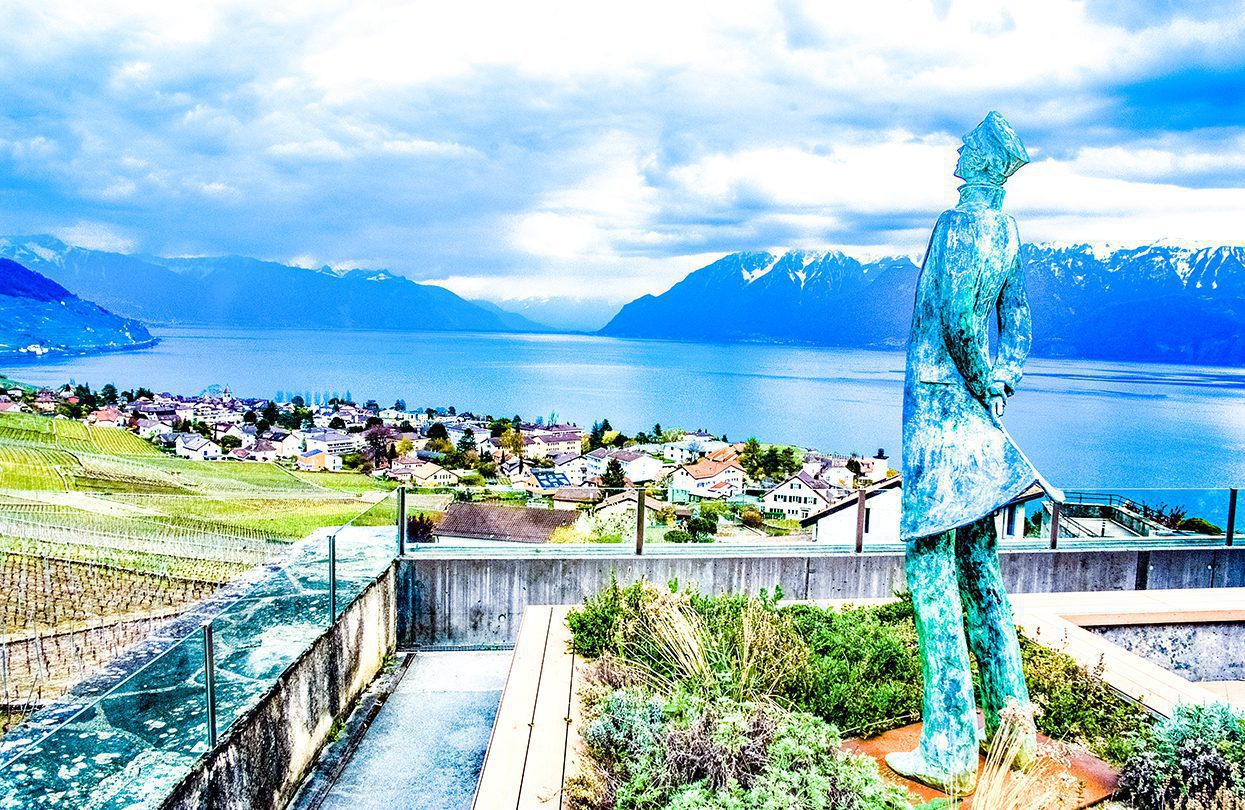
Comic book hero Corto Maltese looks out to sea in Grandvaux, in the heart of Levaux wine country, by Vincent Sung
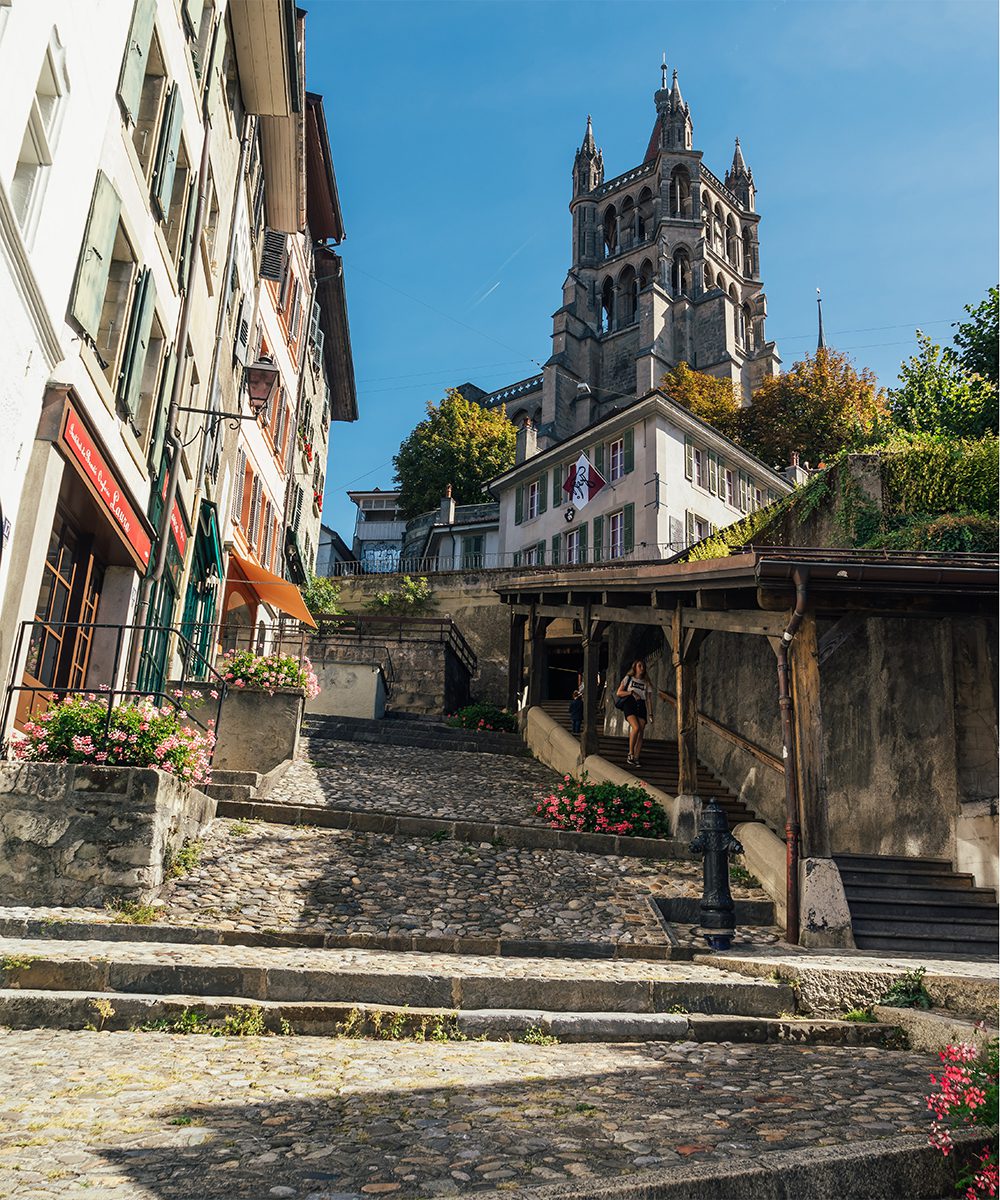
Lausanne has preserved much of its medieval architecture
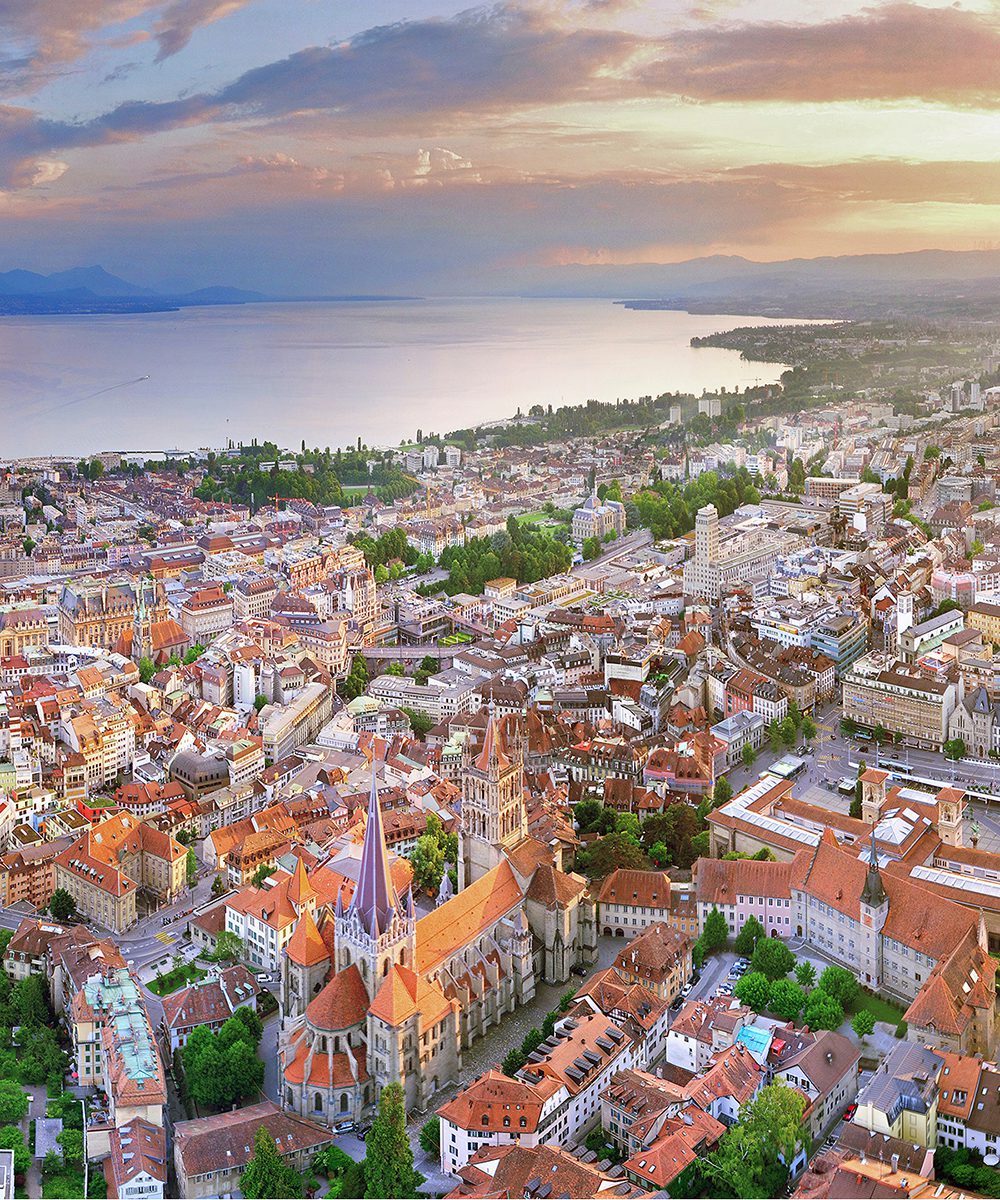
The old town of Lausanne, built on one of the city’s three hills, overlooks the lake, photo by Lausanne Tourisme
“UNDER” THE STATION
The walk takes you along the edge of the elegant neighbourhood known as Sous-Gare or literally under the station, past the historic Beau-Rivage Palace hotel. Next door you’ll find the Olympic Museum, filled with memorabilia from the games and athletes and an interactive section that allows you to test your Olympic skills, an ode to the Olympic spirit. The museum’s park is studded with sports-themed artworks by Niki de Saint-Phalle, Botero and Alexander Calder. Up the hill (one of the three on which Lausanne is built) is the Musée de l’Élysée, dedicated to world-class photography exhibitions.
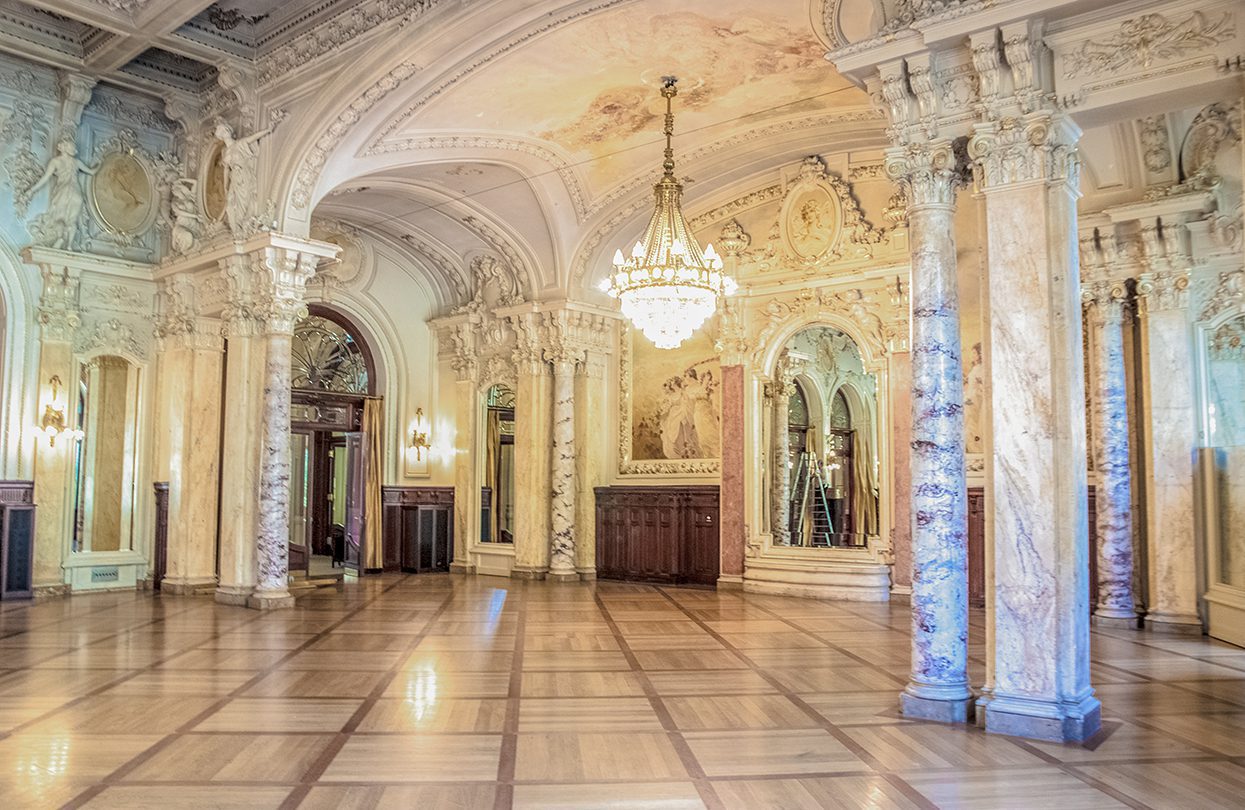
The ballroom of the venerable Beau-Rivage in Lausanne has also been used for international summits, by Vincent Sung
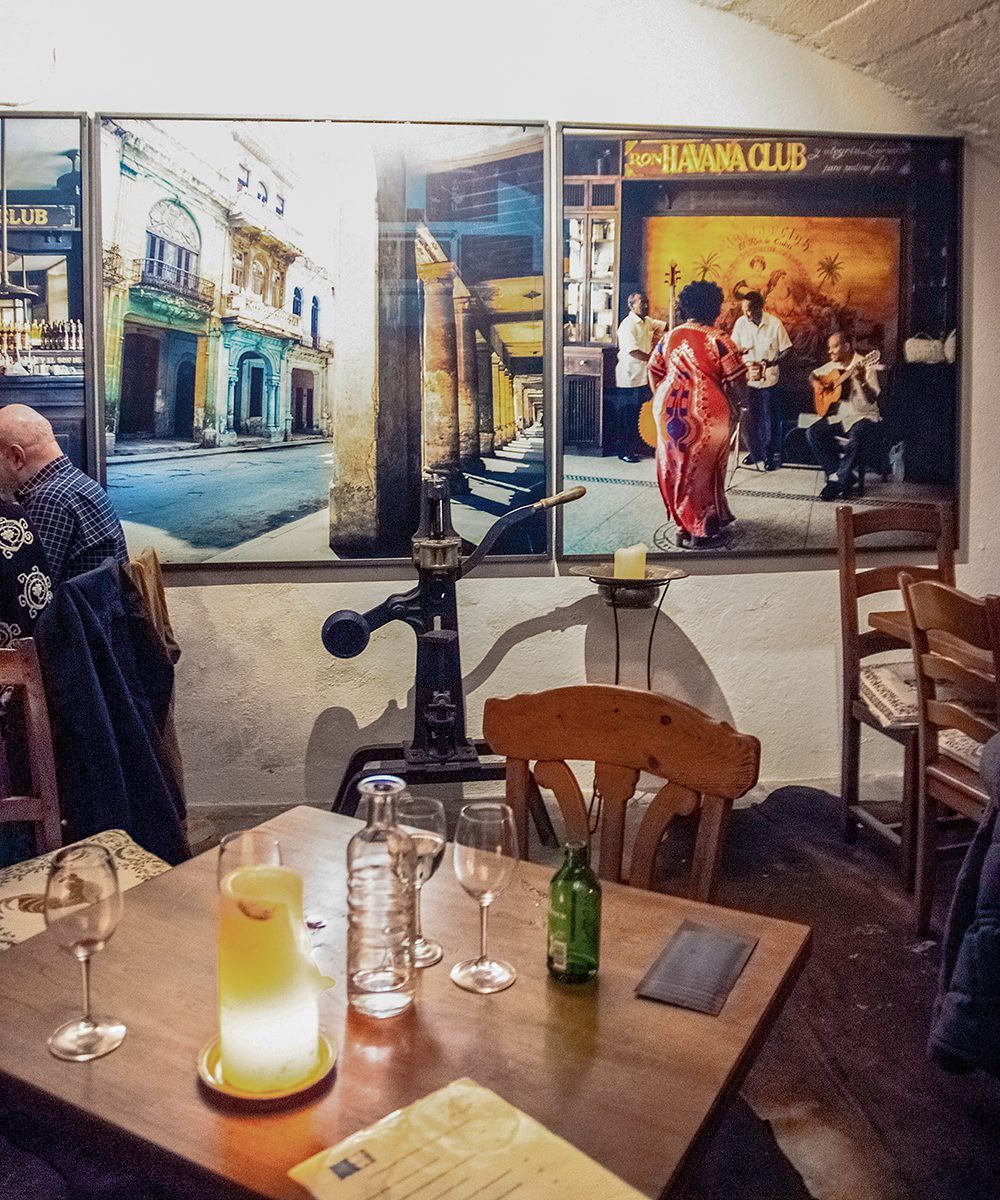
The ballroom of the venerable Beau- Rivage in Lausanne has also been used for international summits
CITÉ
If you’re lucky enough to find yourself on Place de la Riponne on a Wednesday or Saturday morning, check out the market for specialities like gros-de-Vaud, a modern take on traditional cheese-making. Riponne is also where Lausanne has embraced that contemporary culinary phenomenon called the food truck.
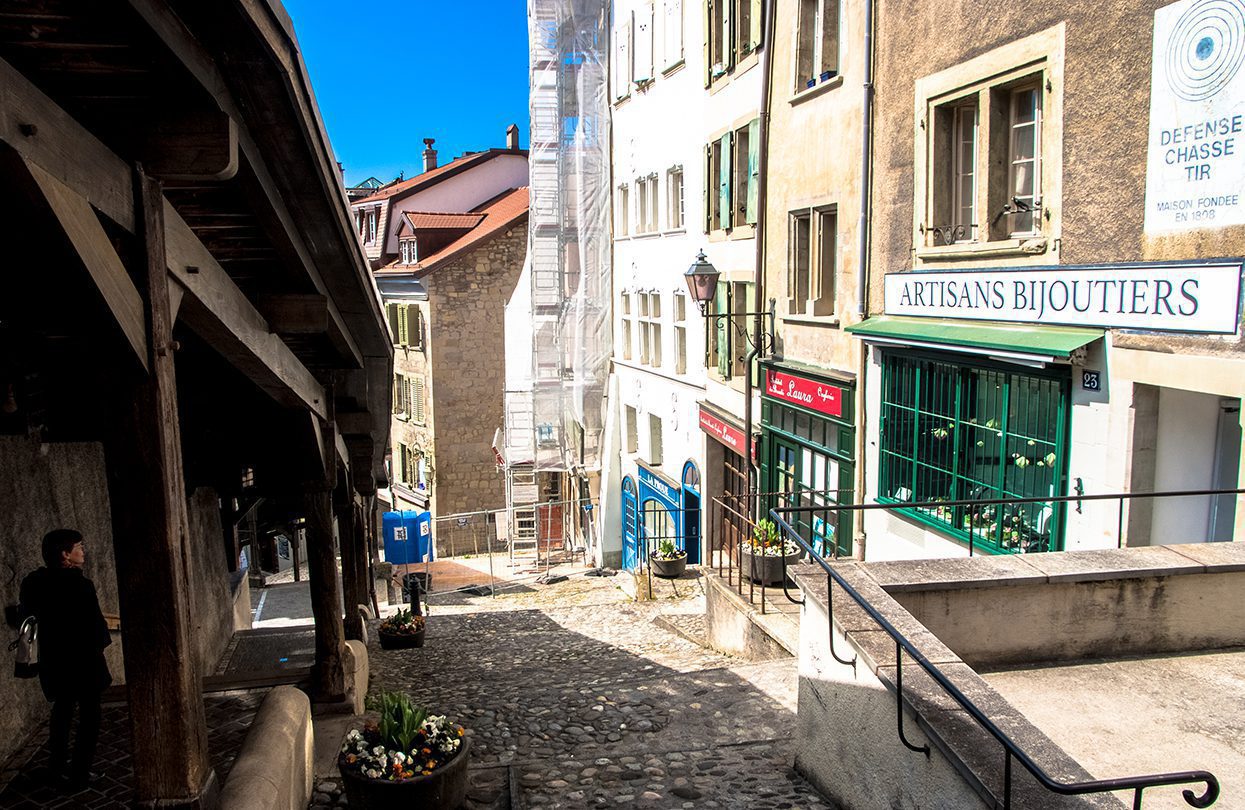
The Market Steps in Lausanne lead to the cathedral, by Vincent Sung
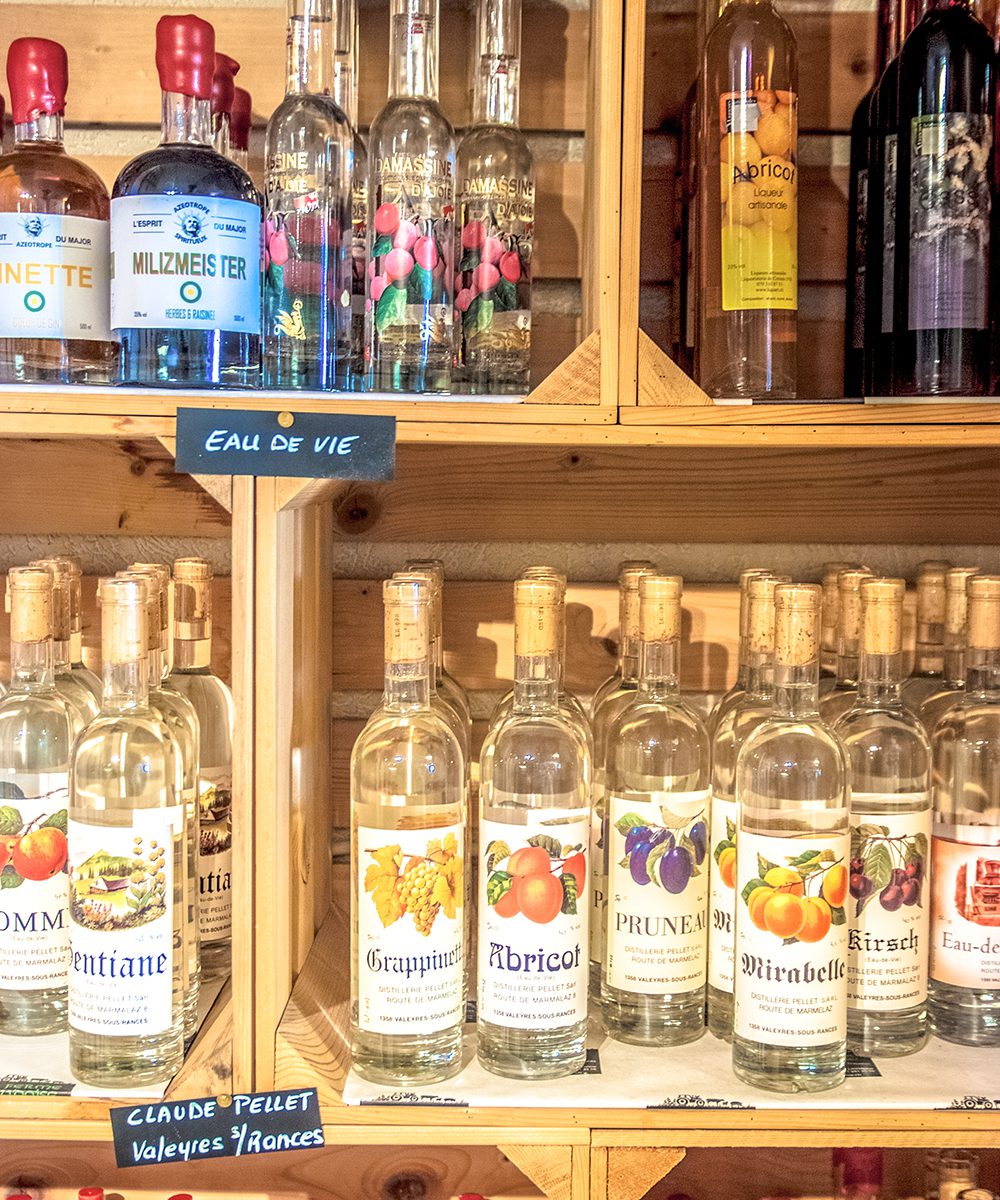
Distilled spirits line the shelves at La ferme vaudoise
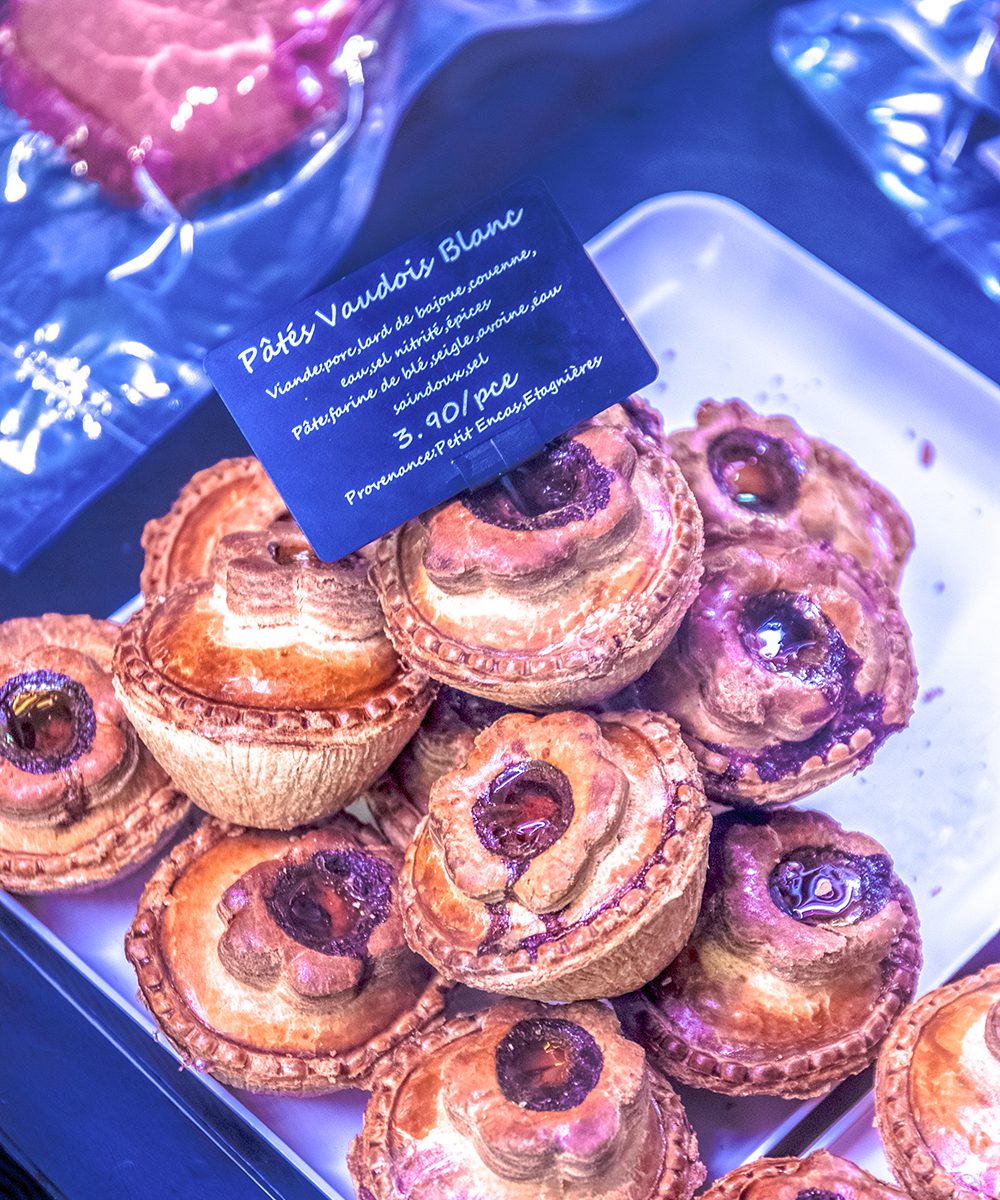
Meat pies are a specialty of the Canton of Vaud
Visit the Palais de Rumine, built with the funds that philanthropist Gabriel de Rumine left the city in 1871. It houses five museums, including the Museums of Fine Arts (now moving to Plateforme 10 below) and Archeology. A footbridge connects the museums to la Cité and the town’s stunning gothic cathedral, a Protestant place of worship since 1536. Though it was stripped of many of its ornaments during the Reformation, you can still see traces of the original colours at the Painted Portal.
Take the Escaliers du marché (Stairs of the Market) down to place de la Palud, where the statue of Justice stands in front of City Hall. You can’t leave without stopping at Dan Durig’s chocolate shop where some sweets are made with raw unroasted cacao, giving the chocolate a round, fruity flavour. Enjoy more treats at La fermevaudoise where the best artisanal meats, cheeses and wines from around the Canton of Vaud are sold.
The area has always been popular with artists including Frankenstein author Mary Shelley, Lord Byron who wrote The Prisoner of Chillon here, and American culinary icon M.F.K. Fisher.
FLON TO THE STATION
LibrairiePayot, the largest bookshop in French-speaking Switzerland, also stocks books and periodicals in English. Cross the shop to get to the Garages du Flon, now the heart of Lausanne’s pedestrian shopping district on the site of what once was a series of merchandise warehouses, as you can see from the ramps, tracks and other industrial fixtures still in place.
Not far up the hill you’ll find the Collection de l’Art Brut, the largest museum of outsider art in the world. A term coined by Jean Dubuffet in the mid 20th century to describe work unbound by the conventional art world, Art Brut often reflects the fantasies and psychological states of its creators. The epistolary art, ornately crafted envelopes and letters sometimes addressed to Dubuffet himself, shouldn’t be missed.
Back down the hill next to the train station is the dramatic new Plateforme 10. Built on the site of locomotive depots, it has been designed to become the cultural hub of the city. Over the coming months and years, museums including the Fine Arts and the Élysée will move in, joining other exhibition and performance spaces.
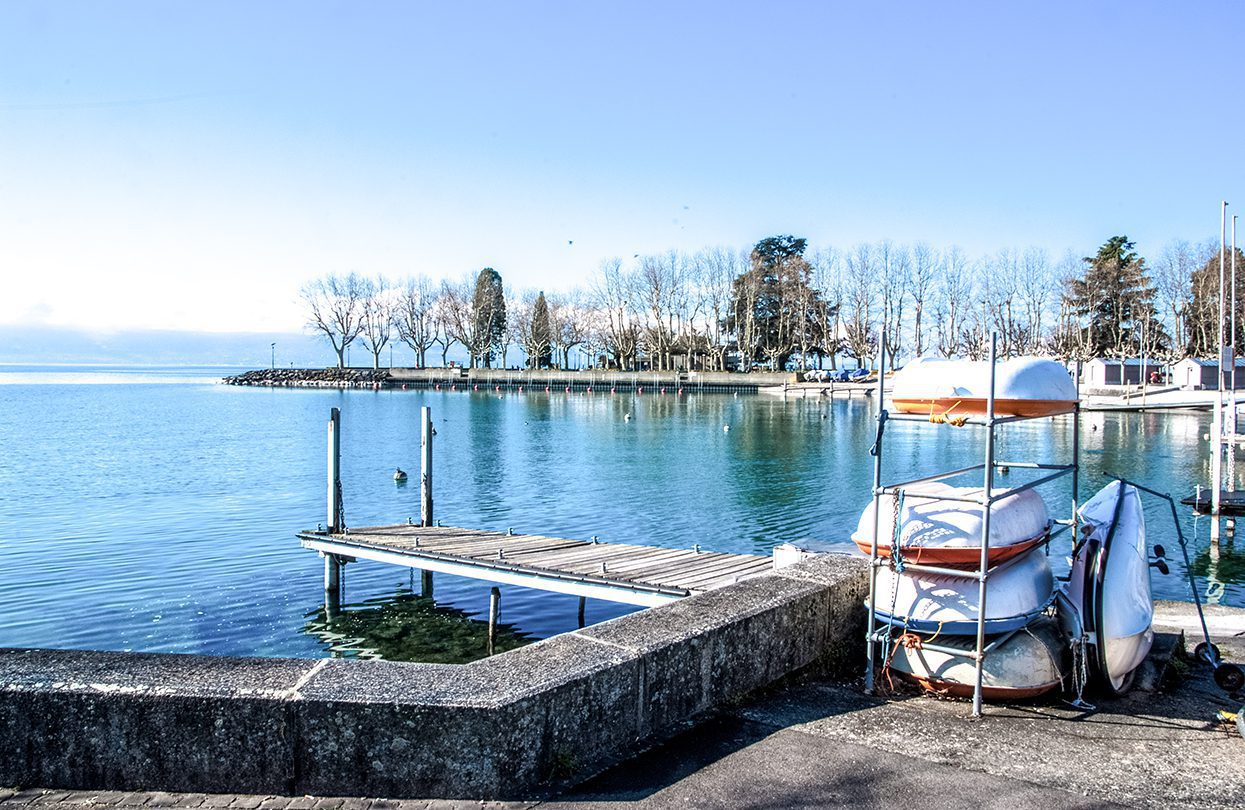
Sailing and other sports on the lake are popular as soon as the weather permits
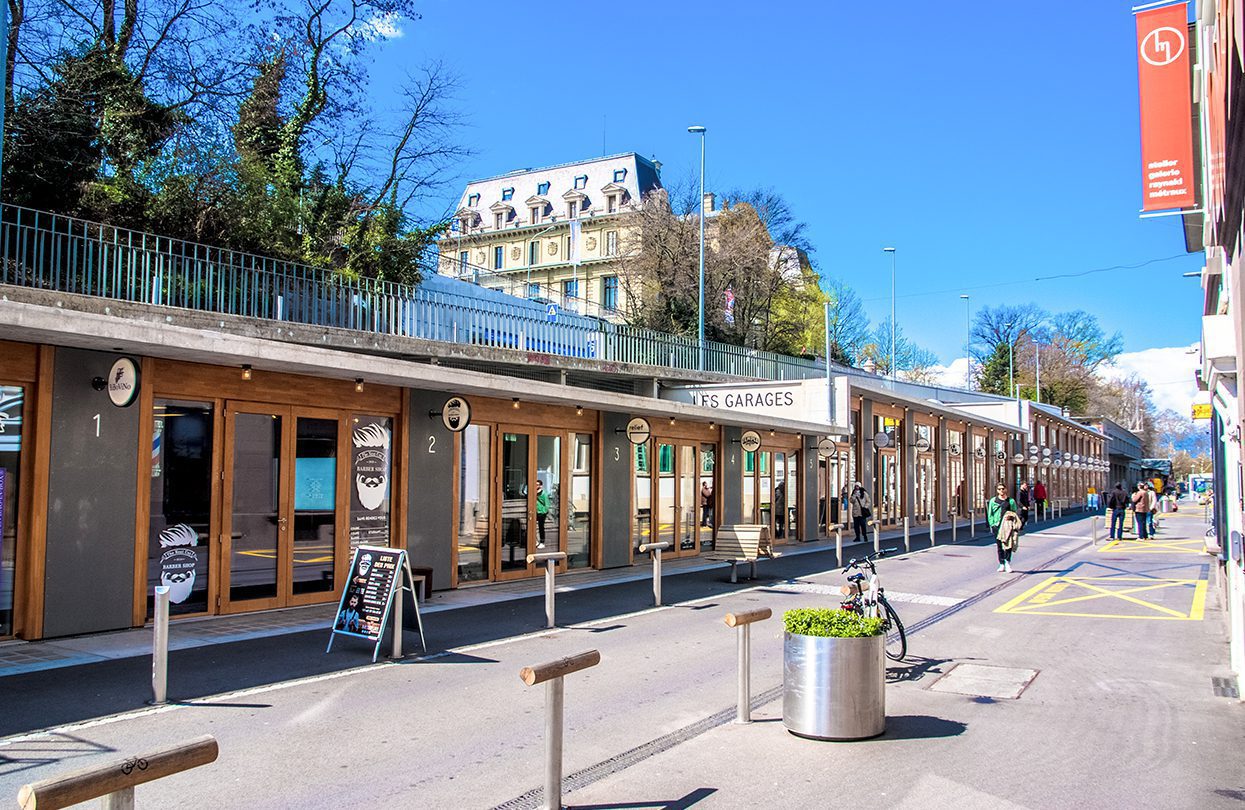
Les Garages du Flon, once used as a depot, are now at the heart of Lausanne’s shopping streets
WHERE TO EAT
Brasserie de Montbenon is located in what was originally the Casino de Montbenon built in 1909. When the International Olympic Committee moved to Lausanne in 1915, the building was used as its first headquarters. Today, in addition to the restaurant that serves modern brasserie classics like roasted bone marrow and steak tartare, the building also contains the Cinémathèque where films from the Swiss Film Archives are projected, and an events space. Unsurprisingly the esplanade affords those stunning lake views.
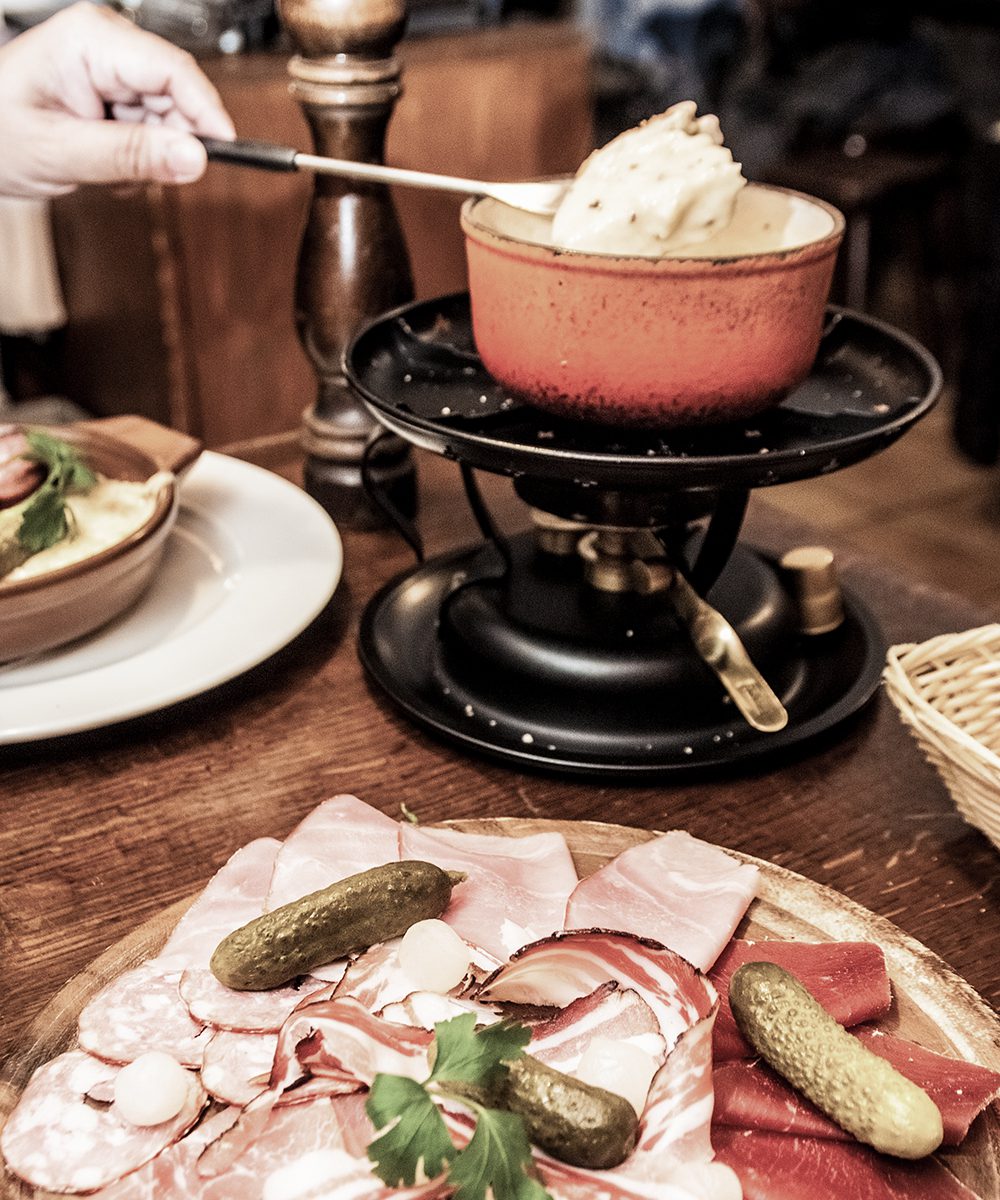
La Pinte Besson, Lausanne’s oldest restaurant, serves classic Swiss fondue
La Pinte Besson first opened for business as a wine merchant in 1780 making it the oldest such establishment in town. Today locals and visitors alike come to dip chunks of crusty bread into unctuous cheese fondue (add a generous shaving of black truffle for something really special) and garnished rösti (crisp potato pancakes). A little local Chasselas by the glass, carafe or bottle will wash down the rich, satisfying fare.
Celebrated chef Anne-Sophie Pic, who holds three stars for her first restaurant in Valence over the border in France, earned another two at the Beau-Rivage, her first off-site restaurant she opened 10 years ago. The choice was an easy one, she told World Travel Magazine. “[There was] an encounter with an establishment with which I share values, and my desire to explore the Swiss terroir,” she explained. “I discovered exceptional products that enriched my creative process like pine buds, mountain cheeses, wild herbs and freshwater fish from Lac Léman.” Féra and omble chevalier are among the local fish she has embraced.
WHERE TO STAY
The luxurious Beau-Rivage Palace opened in 1861 and the “new” wing was added in 1908. The ballrooms have been used for international treaties and the guest book reads like an international Who’s Who including Coco Chanel, Keanu Reeves, the Dalai Lama or the late King of Thailand, who spent much of his childhood in Lausanne. The nec plus ultra is a spacious suite overlooking the lake.
Dating from 1909, the Royal Savoy was the object of an extensive overhaul and expansion and reopened in 2015. The hotel makes full use of its garden where guests can order picnic baskets and barbecues. Other first class features include the Brasserie du Royal where celebrated French chef Marc Haeberlin has signed some of the dishes, the rooftop Skylounge, and the drop-dead gorgeous 1500 square metre spa area.
VEVEY
Just a few minutes down “the coast” lies Vevey. The wineries of Lavaux between the two cities have been listed as a World Heritage site by UNESCO. Chexbres is where the great American food writer MFK Fisher found and lost the great love of her life that she later recounted in The Gastronomical Me. In Lutry, Cyril Séverin revived the Domaine du Daley, the oldest registered business in Switzerland whose original cellars were built in 1397. While other producers keep their production at home, Séverin found markets in Asia, like The Four Seasons in Hong Kong or a distinguished luxury watch merchant in Tokyo, who serves Daley’s Pinot Noir alongside far more prestigious Romanée-Conti. The Vinothèque de la Maison Rose in Cully, where some of the terraced vineyards in the UNESCO heritage site are located, is a wine shop where you immediately feel at home. It is run by Danielle DebraineWannaz, the daughter and sister of winegrowers, who shares her stories and arranges tastings with her customers.
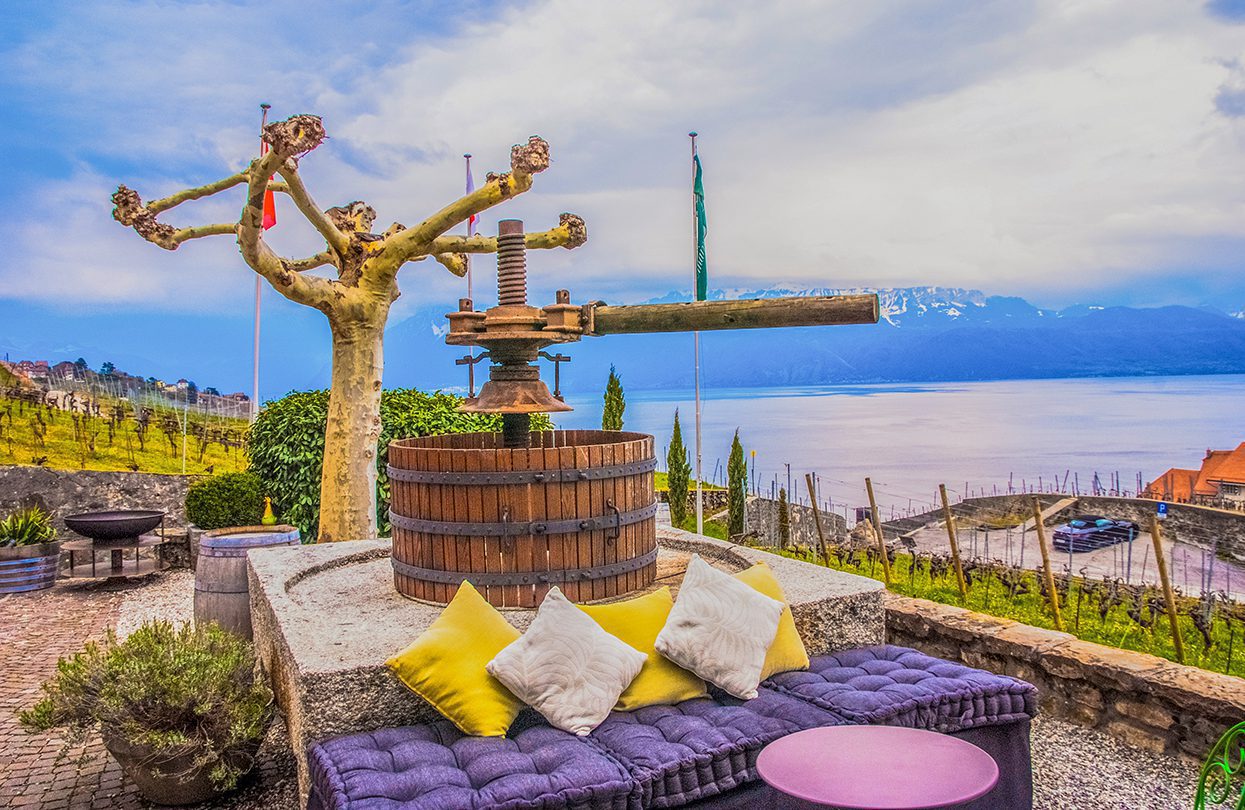
Breathtaking view from Domaine du Daley
Back in Vevey, the Confrérie des Vignerons or Brotherhood of Winegrowers has a museum that retraces its history over centuries. They hold a festival to honour the most skilled winegrowers once a generation and the first celebration this century will be held in Summer 2019. The festivities are expected to attract a million visitors and will take over the town for three weeks.
Bravo! is a beautifully designed shop where you’ll find everything Swiss, from textiles to food to live performances. The Jenisch Museum focuses on painting, drawing, prints and engravings. And the Alimentarium is a unique museum (look for the 8-metre high fork stuck in the water outside). Celebrity chef Philippe Ligron who runs the museum’s food experiences described his mission. “We are not just explaining food, we want to make people aware of eating thoughtfully,” he says. “We accompany them on a journey to re-connect with food” through exhibits and workshops that bring guests into the museum’s garden and out to meet artisans. But this is not just another cooking class. “We add a human dimension, a story. The dialogue we create with the visitor is very important.” In short, a perfect outing for a foodie.
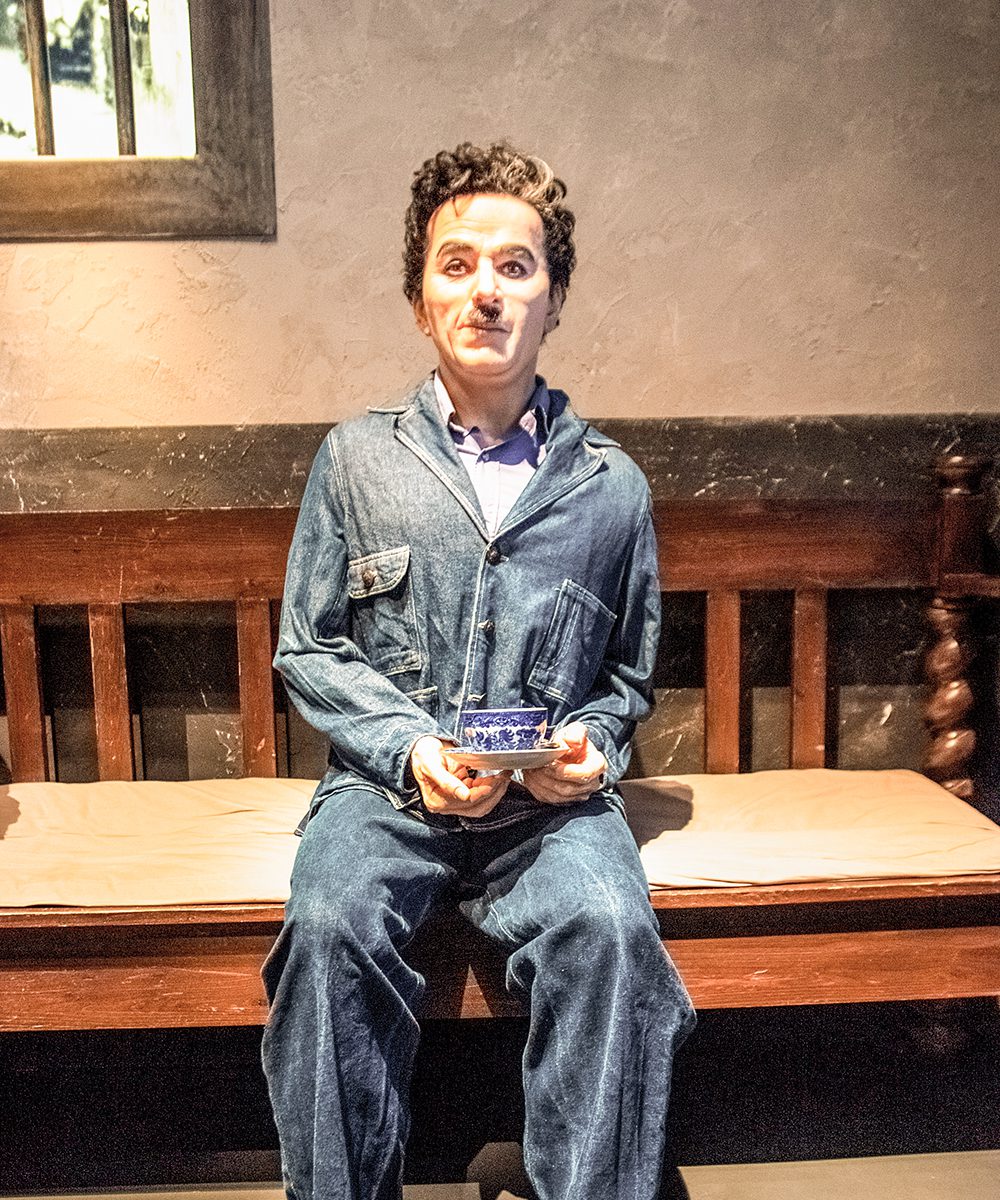
In the studio of Chaplain’s World, visitors can recreate scenes from their favourite Charlie Chaplain films
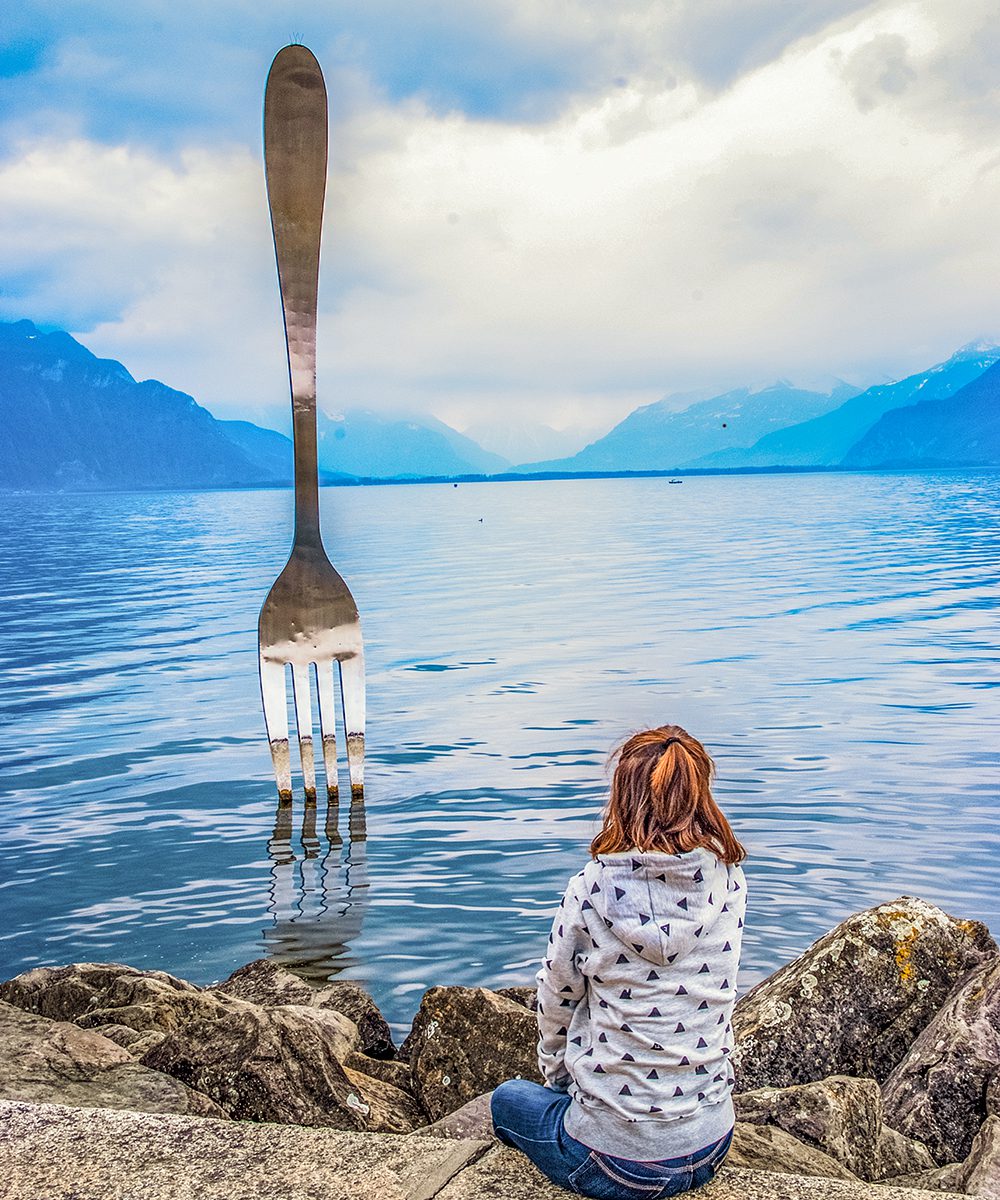
The Fork is part of the collection of the Alimentarium
Perhaps the most surprising museum is Chaplin’s World, the house Charlie Chaplin spent the last three decades of his life. The house proper is a tribute to the man and his life, drawing you into his daily routine. The Studio on the other hand cleverly lets you become a part of his sets and films. Attention: selfie op guaranteed!
WHERE TO EAT
In Cully, the Auberge du Raisin is a veritable institution, concentrating on local ingredients like Swiss-grown poussin (young chicken), grilled hanging from a chain in front of an open fire, in a 15th-century fireplace in the middle of the dining room.
On the lake in Vevey, Chef AurélieSeignouret of Ze Fork serves up creatively playful takes on an ingredient or a theme, and multiplies it by three, like the trio of Bierschwein pork (belly, chop and cheek) or of lake fish, all served on the same plate.
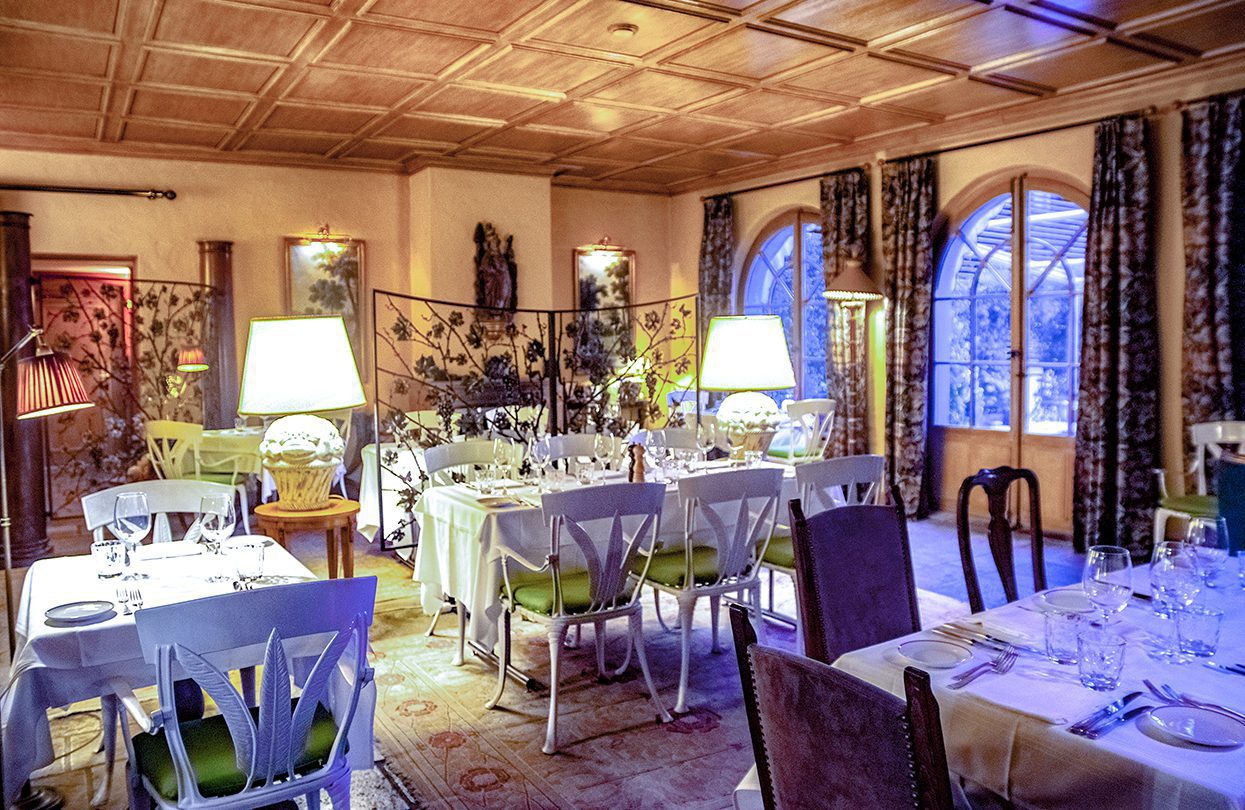
L’auberge du raisin in Cully serves excellent grilled meats cooked right in the dining room
EXCURSIONS
The Château de Chillon lays claim to being the most visited historical attraction in the country and it’s not hard to see why. It’s a perfect fairy tale castle with dungeons and towers that juts dramatically out onto the lake with real insight into the workings of the castle.
Glacier 3000 takes you into the heart of the Swiss Alps. In addition to winter and summer sports, you can take the Peak Walk, the only place in the world where you can walk from one mountain peak to another on a suspension bridge.
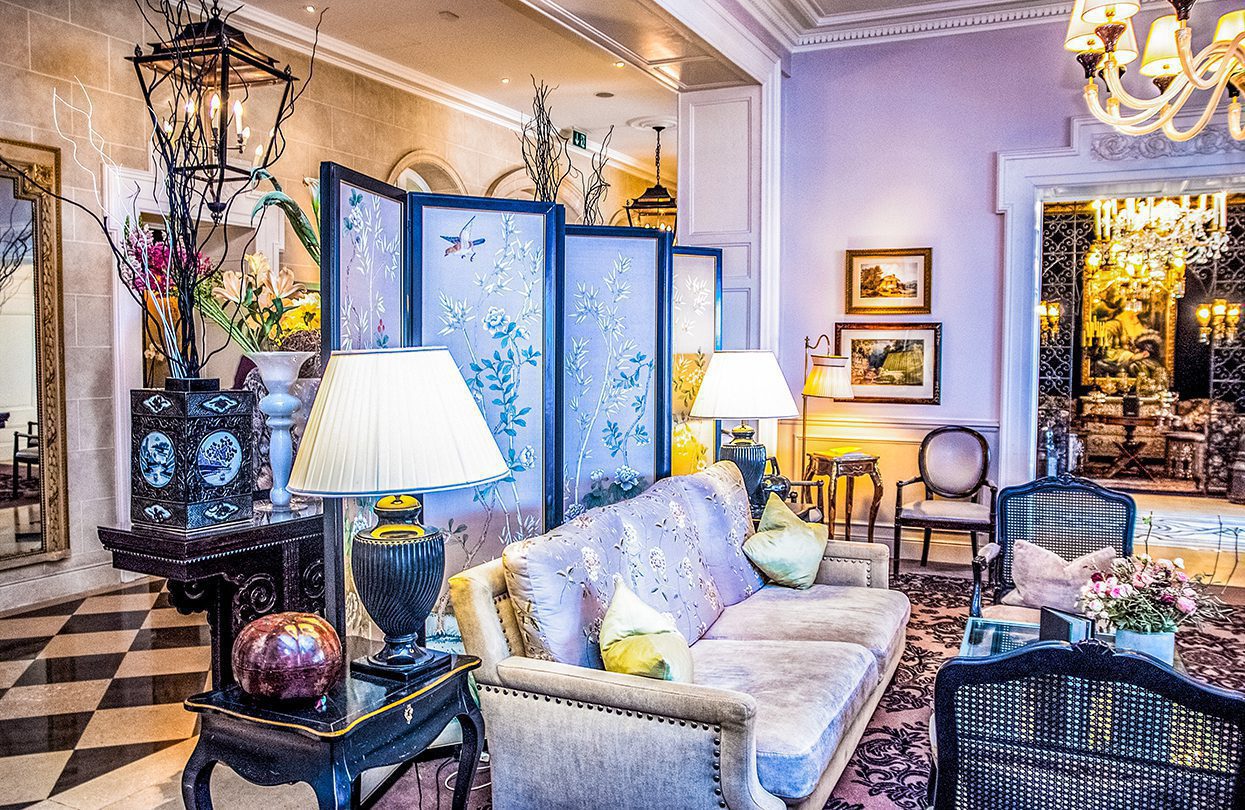
The Grand Hôtel du Lac in Vevey has preserved its 19th century charm, by Vincent Sung
WHERE TO STAY
Grand Hôtel du Lac is plush and atmospheric, like the Booker Prize-winning novel of the same name by Anita Brookner. What it isn’t is dark and melancholy as described in the book, thanks to a more recent refit. As its name suggests, the view of the lake is what you’re after, though the Michelin-starred Les Saisons restaurant and the in-house spa are nice perks too. ◼
Subscribe to the latest edition now by clicking here.
© This article was first published in June-July 2019 edition of World Travel Magazine.

